Every B2B SaaS marketer knows that there's a valuable strategy that stands out for driving demand: the resource hub. It acts as a central repository where top-notch content in various formats comes together, strategically distributed across multiple channels to connect with your audience. In this blog post, we'll explore the significance of resource hubs and walk you through the steps to create one. Let's dive in.
What Is a Resource Hub?
Resource Hub is like a one-stop spot for your prospects and customers where they can learn more about your product or learn about the common challenges you solve. These hubs help your prospects learn about different topics in a more organized and accessible way, which positions you as a thought leader on specific industry topics down the road. They are more than just a website with a bunch of scattered information.
Wanna know the best part about having your own resource hub? It helps potential customers build trust and confidence in your brand. They'll be more likely to stick around and check out what you have to offer, knowing that you're an expert on a certain topic.
Besides being a great tactic for educating your target audience, these learning hubs are also useful tools for generating demand, boosting Google rankings, building trust in your brand, and building that brand engagement.
Why Resource Hubs Work for Demand Generation?
There are many reasons why resource Hubs can work wonders for your demand generation strategy. Firstly, they serve as a centralized space where your target audience gets solutions and answers to their problems, finds relevant information, learns about your products/services, and discovers new content. This streamlined approach not only boosts your credibility as a go-to source for industry insights but also encourages engagement with your brand. As visitors explore your resource hub, they not only gain knowledge but also develop a stronger connection with your brand, fostering a sense of loyalty.
From a technical standpoint, resource hubs also help to improve your Google rankings. The information-rich nature of these hubs makes them attractive to search engines, which positively impacts your SEO efforts. As a result, your brand gains more visibility, reaching a broader audience beyond those actively seeking your product.
6 Tactics to Build a Killer Resource Hub
Now that we understand the importance of having your own resource hub and its impact on your demand-generation strategy, let’s take a look at some of the most effective tactics how you can generate demand by having one.
1. Offer a variety of content types
How many times have you heard the phrase “Content is king”? Well, no matter how many times you hear it, it will always stay relevant. Successful demand generation strategy requires different types of content, a lot of content, most of it ungated. And what better way to offer content to your target audience than building your own resource hub? By providing a variety of content types, you make sure you cater to different learning preferences and interests, so let’s take a look at some types of content your resource hub should have:
Have Your Own Academy
Think about creating an online academy within your resource hub filled with various courses, training, or masterclasses that have a mix of different learning stuff. You can fill up the academy with content created both by your team or by external providers and provide full online training. This will make the learning experience so much more exciting for your audience and establish your brand as an industry leader. And, of course, when you establish yourself as a leader, you increase your brand recognition and credibility, which ultimately leads to more leads and conversions!
The best part? These educational initiatives not only help users make the most of your software but also contribute to their professional development. By providing continuous learning opportunities, you solidify your position as a partner in their success. So, why not give it a try?
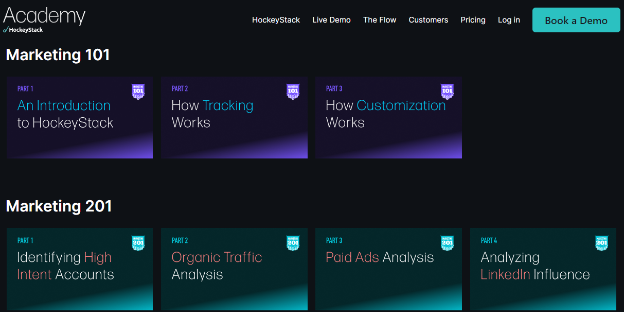
Run Topic-Related Podcasts
Podcasts are not a new concept, but their rising popularity makes them an invaluable tool for building your brand awareness. To get the most impact out of them, instead of centering your podcast solely around your product or service, consider diving into industry-related topics. Imagine hosting a weekly or bi-weekly show delving into news and trends relevant to your SaaS niche.
For instance, if your solutions cater to financial businesses, discuss the latest in the finance world, exploring challenges, solutions, case studies, and future trends. Consistency in releasing episodes and promoting across various platforms is key. Besides building brand awareness, podcasts offer a platform to express your views, connect with industry professionals, and foster relationships.
Publish Weekly Blog Posts
Publishing regular blog posts is a fantastic tactic to keep your audience engaged and informed. It's not just about showcasing your expertise; it's about staying current with industry trends, sharing insights, and addressing common challenges your customers might face. These blog posts serve as a dynamic tool, creating a narrative around your brand, establishing thought leadership, and providing valuable solutions to your audience.
Plus, consistent updates signal to your audience that your resource hub is a reliable source of up-to-date information, making them more likely to return for more insights and, ultimately, consider your SaaS as a trusted partner. So, don't underestimate the impact of a well-crafted, regularly updated blog in fueling demand and building lasting connections with your audience.
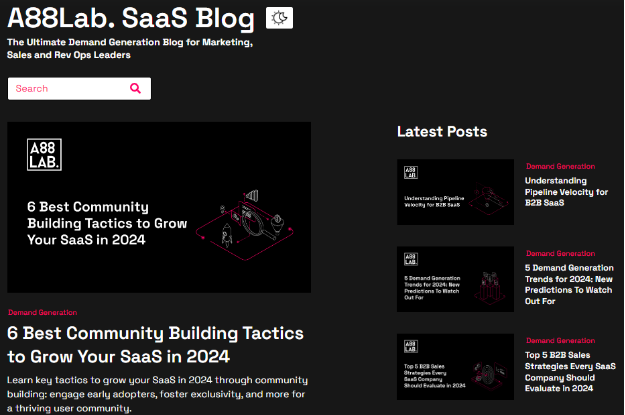
Showcase Your Case Studies
Now, let's talk about including case studies in your SaaS resource hub. Case studies are like real-life success stories that can resonate with your potential customers. By sharing tangible examples of how your SaaS has tackled specific challenges and delivered impressive results, you're not just talking the talk. You're walking the walk. Case studies provide concrete evidence of your product's effectiveness and build trust with your audience. They give potential customers a clear vision of the benefits your solution can bring to their own operations.
By including these case studies in your resource hub, you're giving potential customers proof points and a sneak peek into the life-changing power of your solution. It's a smart and strategic move that offers genuine authenticity and credibility that can significantly influence the decision-making process for prospects.
These are only a couple of content types you should consider including in your resource hub. Additionally, there are also webinars, articles, live events, etc, that offer a multi-dimensional experience, allowing users to engage with your content in their preferred format.
2. Implement a Growth-Driven Design
Implementing growth-driven design (GDD) is another powerful tactic to supercharge your resource hub for demand generation. GDD is not just about creating a static website; it's about continuously optimizing and evolving it based on user behavior and market trends. By applying GDD principles to your resource hub, you ensure that it stays fresh, user-friendly, and aligned with the evolving needs of your audience. Regularly analyze user data, gather feedback, and make regular improvements to enhance the overall user experience.
This agile approach not only keeps your content relevant but also boosts engagement and encourages repeat visits. As you adapt to the ever-changing landscape, your resource hub becomes a dynamic asset that not only attracts new visitors but retains and converts them into loyal customers. So, embrace growth-driven design to not just create a resource hub but to cultivate an evolving and responsive hub that fuels demand for your SaaS.
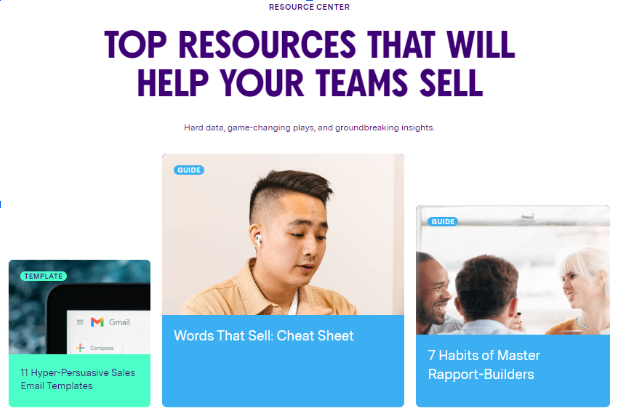
Here are some steps to keep in mind when starting with GDD:
-
Identify your target audience
-
Create a plan for your resource hub based on your target audience's needs and preferences.
-
Start collecting data on how users interact with your website and gather feedback from your target audience.
-
Use the data and feedback to make iterative improvements to the website that align with your audience's needs and preferences.
- Continuously analyze user behavior and market trends to identify new opportunities for improvement.
By following these steps, you create a resource hub that is responsive to the needs of your audience and continually evolving to meet their needs. This will help you attract new visitors, retain them, and ultimately convert them into loyal customers.
3. Organize Your Content by Topic and Keywords
Gathering and organizing your content by topic and keywords is like crafting a roadmap for your audience. Start by creating a detailed spreadsheet that will help you sort your content by type. Create columns for URL, title, relevant topics, keywords, and content type. This organized approach ensures that users can easily navigate your resource hub and find the exact information they're looking for.
Consider the user's perspective when structuring your content. What terms and phrases are they likely to search for? Align your keywords with their needs, making it intuitive for them to discover valuable insights. This meticulous organization not only enhances user experience but also optimizes your resource hub for search engines, boosting your Google rankings and attracting a broader audience.
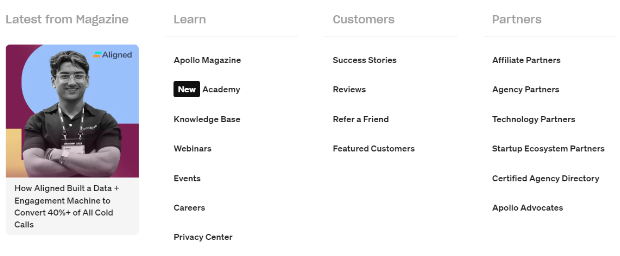
While it might seem like a meticulous task initially, this upfront effort ensures a seamless and user-friendly resource hub. Your audience will appreciate the ease of navigation, and you'll reap the rewards in terms of increased engagement, trust-building, and, ultimately, demand generation. So, roll up your sleeves, dive into that spreadsheet, and pave the way for a resource hub that truly resonates with your audience's needs.
4. Add Strategic Calls to Action
It's always a good idea to add some calls to action to your resource center. But don't go overboard with them, or you might end up annoying your readers. You want to focus on providing valuable and informative content, but that doesn't mean you can't also guide your audience towards your relevant paid offerings in a friendly and non-intrusive manner. Including well-placed calls to action based on your goals can be very effective.
For instance, if your target audience is interested in learning marketing skills, adding a CTA on that page could encourage them to sign up for a paid course, which Moz equates to "leveling up." Remember to keep your CTAs in line with your audience's journey. Consider what a logical next step would be for them after browsing your resource center that could also bring them closer to becoming a customer. Use them sparingly but purposefully for the best results.
5. Optimize Your Resource Hub
Optimizing your resource hub is not just a one-time task but an ongoing strategy. Regularly assess the performance of your content by analyzing user engagement metrics, such as page views, time spent on the site, and conversion rates. Use this data to identify high-performing content and areas for improvement. Implement A/B testing to refine the user experience and tailor your resource hub to meet evolving audience preferences.
Additionally, leverage SEO techniques to enhance the discoverability of your content, ensuring that your resource hub ranks high on search engine results pages. By continuously refining and fine-tuning your resource hub, you not only attract new visitors but also retain and convert them into loyal customers, creating a dynamic and impactful tool for demand generation. Remember, constant optimization is the key to staying ahead of the competition.
6. Share and Promote Your Resource Hub
Sharing and promoting your resource center is that crucial, final tactic you need to implement to generate demand. Your resource hub may have a lot of valuable content, but it will not be effective unless it is visible. Actively share and promote your resource center through various channels, including social media, newsletters, and industry forums. Collaborate with influencers or industry experts to share your content and expand your reach and credibility.
You may also want to consider running targeted paid promotions to ensure your resource hub reaches the right audience. By strategically promoting your resource center, you not only increase its accessibility but also position your SaaS as a go-to authority in your field, driving demand and fostering lasting connections with your audience. Remember that the best resource hub is the one that is actively embraced and utilized by your target audience.
Conclusion
Creating a dedicated resource page solidifies your authority and credibility in the eyes of your audience. This page serves as the central hub where users can access a collection of your most valuable and impactful content. Showcase your best-performing blog posts, insightful whitepapers, engaging podcasts, and compelling case studies on this page.
By presenting a comprehensive range of content, you not only demonstrate your expertise but also offer a one-stop destination for your audience to delve into the depth of your knowledge. This resource page is a powerful tool to not just attract potential customers but also to nurture trust and confidence, ultimately driving demand for your SaaS. It positions you as the go-to source in your industry and sets your brand as a trusted leader.
.png)
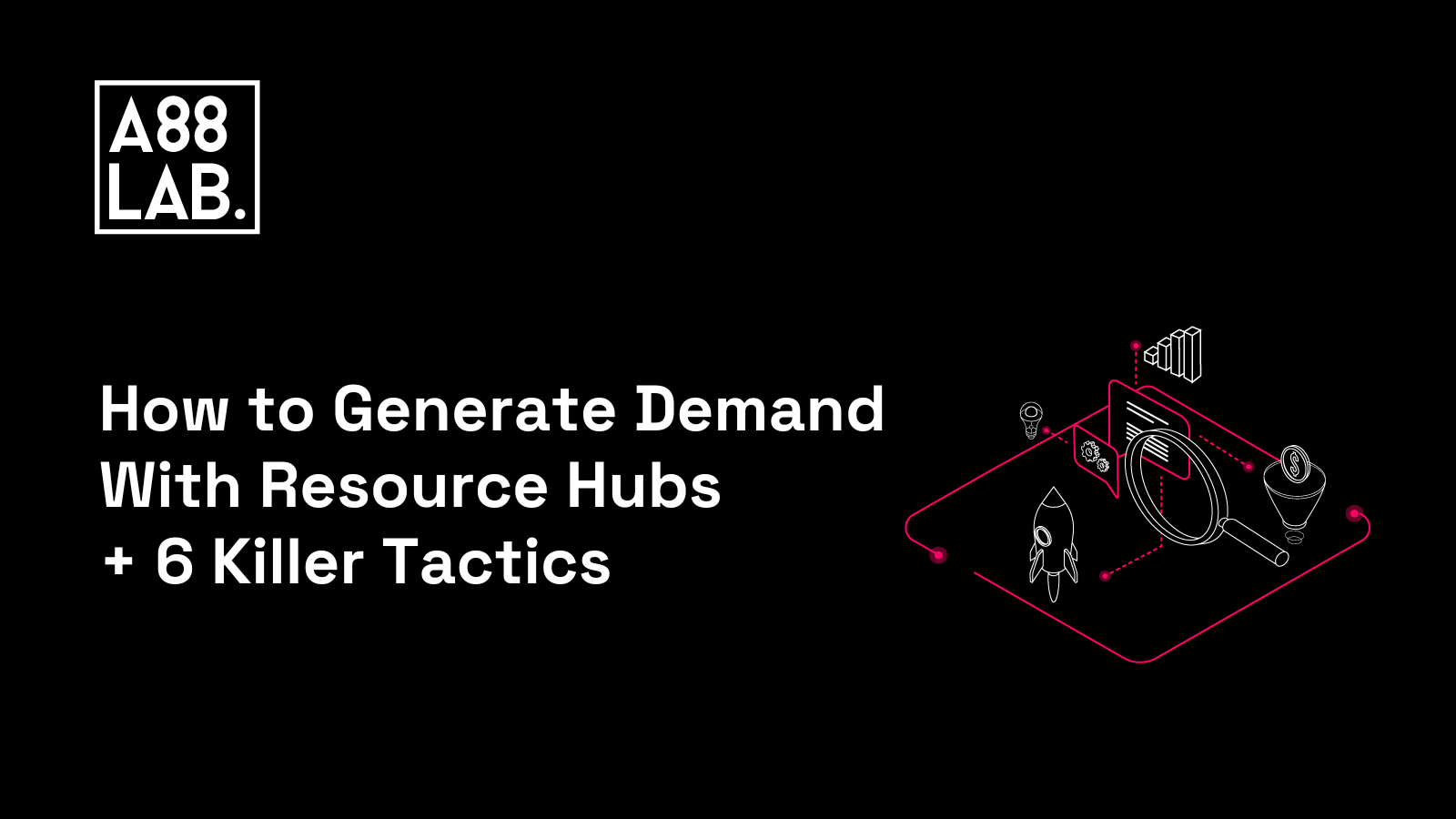
-1.png)
